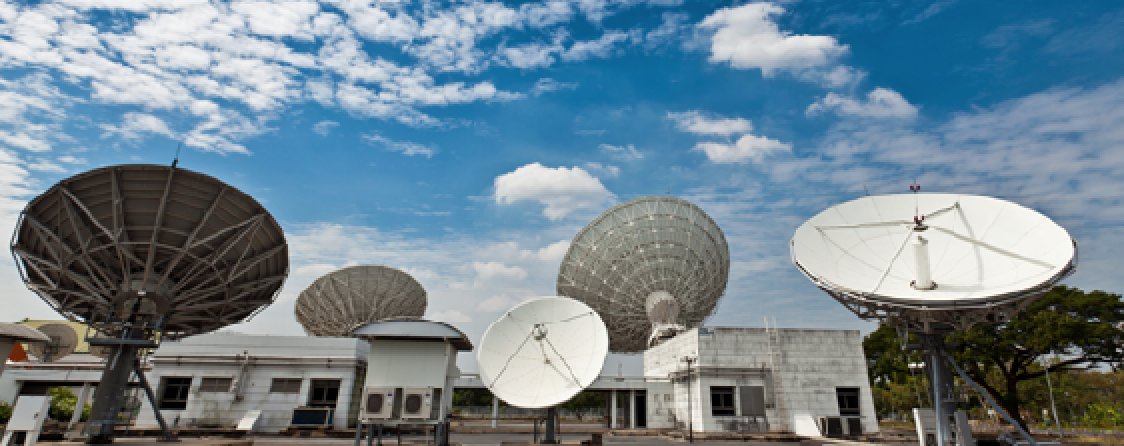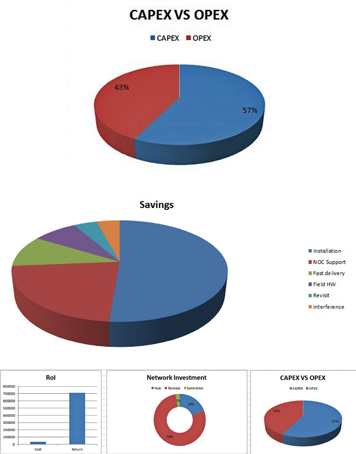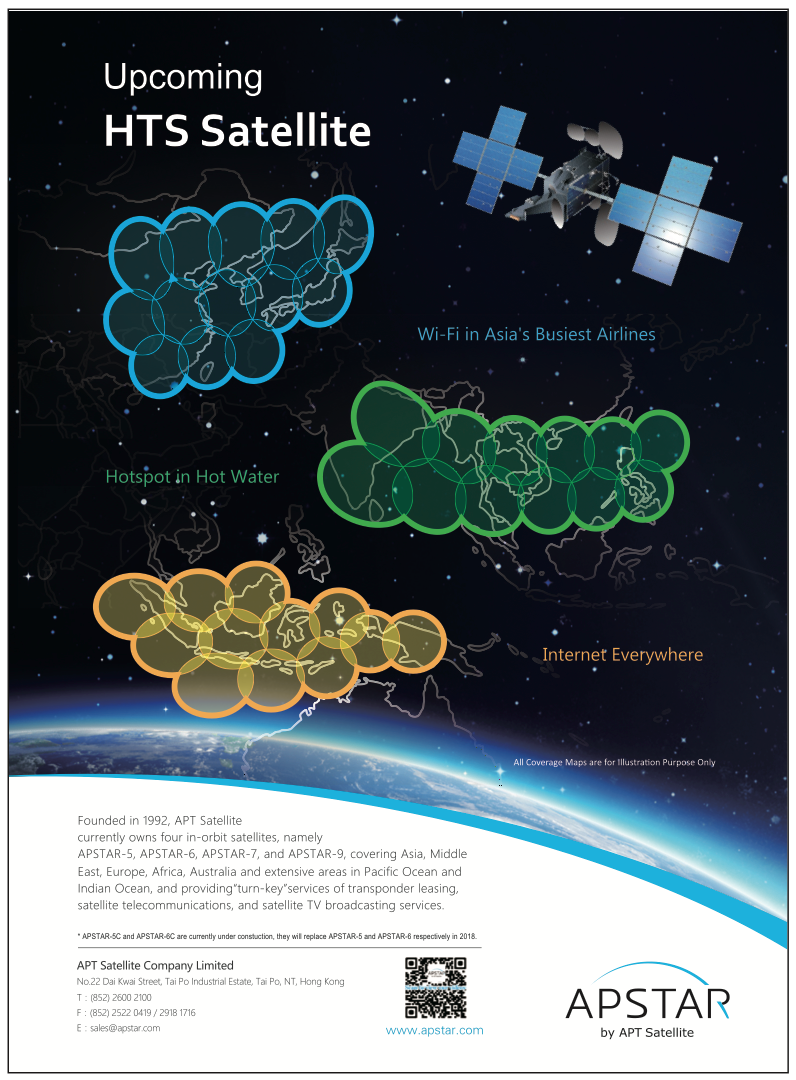Very Small Aperture Terminal (VSAT) Networks provide an extremely valuable and much needed resource for an entire range of different applications, many of which would simply not be possible without VSATs, as they are operated in remote environments where no other connections are available.

Robert Bell, left and Juan C. Sanchez
Since the first VSAT systems emerged in the 1980s, they have proven to be extremely durable and flexible, having evolved as speeds, throughput, and applications have all grown. However, the VSAT environment is a very unique one and certainly not without its challenges.
A teleport may manage dozens or even hundreds of individual networks, each comprising anywhere from 20 to 2,000 nodes with their own specific configuration, bandwidth requirements and mission criticality. At the same time, providers are under increasing pressure to deliver all of this functionality at low cost, all the while maintaining high quality of service — that is no mean feat.
VSAT Challenges
VSAT is, without a doubt, a challenging environment — but what, exactly, keeps teleport operators up at night and how do they go about resolving those challenges? To answer that and other teleport questions, the Understanding and Improving the ROI of VSAT Networks report was produced by the World Teleport Association and Integrasys to provide some insights.
Developing this report revealed some extremely interesting understandings into the challenges faced by teleports. One element was clear — all of the Teleport Operators interviewed struggle with the labor time and the increasing costs to install and maintain VSAT systems. These operators are all either integrating methods to reduce those factors, or seeking ways to do so.
The major costs and challenges of network deployment vary, depending on the type of network, size, application, and vertical market being served. For example, in the cruise ship industry, the biggest challenge is reported as the logistics of getting systems onto vessels. Days of travel and months of advanced scheduling is required for installs to be performed while a ship is in dry dock or a shipyard. However, across all markets, there is strong agreement that the faster a system can be deployed, the sooner revenue can be earned, and that means that no matter what the application, fast and efficient installation is absolutely crucial to the health of a company.
At the same time, however, the VSAT environment is one wherein installation is not always as simple as many may believe. Take the cruise ship example, for instance, where months of pre-planning are required. In most circumstances, VSATs are in remote locations where traveling to them can take considerable time, effort and even resources. Sometimes this may involve traveling along unpaved roads, boat, via airplane, or using off-terrain transport.
In the Government arena, additional complications arise, with some of those surveyed reporting the possibility of being sent back from an installation trip if the proper clearances and credentials have not been secured. The requirement to use individuals who are authorized for access tends to increase the installation labor costs, as there will generally be a much smaller pool of employees who have the necessary clearances.

The Real Cost
When estimating the cost of VSAT systems, most operators immediately think of satellite bandwidth, which is certainly a factor and one that can be optimized through better technology. Multiple technology vendors regularly release new advances for their products. The capex costs at the hub can also be optimized and those costs are easy to calculate. What is not so straightforward is calculating the running costs of a network, which include a whole host of factors that are often overlooked, such as field installers, satellite phone costs, travel, and hub support staff. According to the survey, for a 50-site VSAT high
performance network, capital expenditure represents 45 percent of the total investment, while operating expenses comprise approximately 55 of the cost. One operator stated, “We have experienced challenging financial models, from design to implementation and on-going operation.”
This survey found there is an average travel cost per remote installation of a staggering $1,100. Multiply that cost for numerous VSAT terminals and it is easy to see how these expenses can quickly add up for operators. Around 9 percent of that cost is for labor, with the remainder being attributed to travel, subsistence and materials. Such costs shouldn’t be surprising, given that installers spend — on average — 12 hours working on the installation and approximately 12 hours in travel time.

When things go wrong with a VSAT terminal, then that entire process is repeated with engineers traveling to the site, spending time on site diagnosing the problem and then resolving that problem before heading home. Again, this additional cost for the network operator.
Minimizing Costs While Maximizing Service
Certainly clear from all of the responses is that VSAT terminals need to be far more efficient in order to enable cost savings and this must be accomplished without any compromise on quality of service. This is where clever tools and technology come into play. Tools for improving installation can significantly reduce that cost. For example, if an installation can be accomplished faster, then the time on site and the associated labor cost is immediately reduced. If, at the same time, the installation is made accurately, then the chance of error has been reduced, something that otherwise could mean a repeat trip by the engineers — more money required. The easier and more automated these tools are, the fewer experts are required to operate them, and that has a massive impact on labor costs.
Before the introduction of tools, such as the Integrasys Satmotion Pocket that enables fast and accurate antenna pointing, installers were completely dependent on the NOC operations staff who are reached by voice calling to ensure correct pointing, power, and signal. That is particularly challenging when you consider the number of installs. One operator told us, “...there are times when we may be managing between five and 100 installs in a day.”
Better and more accurate installation also reduces maintenance costs. Technology that enables remote monitoring and operation from the NOC is also having a major impact on maintenance costs and make it easier than ever before for the NOC to have a clear picture of exactly what is happening throughout the network without having to send people into the field, unless there is a problem that cannot be resolved remotely. The more operators can control their networks remotely, the more cost-effective they are likely to be over their lifecycle. Some are even using technology to remotely control modems during installation. “Even if the remote site has no VSAT or IP network, we can activate modems and uplink power control, we can remotely change the frequencies, and sometime change the data rate, via control from our NOC.”
Understanding the ROI of VSAT Networks
Better technology and automation can have a massive impact on reducing those operational costs and resources. Advanced tools ensure accuracy and consistency across the network, which will lead to a better quality service for customers. To understand more ways in which ROI can be improved for these networks, download the full report from the WTA website. A webinar is also being hosted — Understanding and Improving the ROI of VSAT Networks (worldteleport.site-ym.com/store/ViewProduct.aspx?id=9372792) — during the Comsys VSAT Event (www.comsys.co.uk/) in September.


